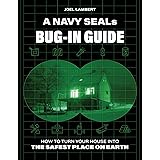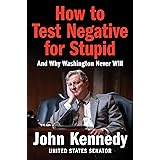Unlock the Hidden Connection That Transforms Every Word You Write into a Powerful Relationship!
Play the Always Connect game to make sure your work relates at all ELEVEN levels
E.M. Forster summed up one of the most important writing lessons I know in his epigraph to Howard’s End: “Only connect…”
I’d hate to tell you how many pages of MFA student work I’ve read in which the writer is sitting in a room alone thinking about thinking. Or in which the protagonist is charging through space for no other purpose than to generate the illusion of Action! In both cases, the characters spend line after line in similar states of disconnected isolation. And the reader wonders, Who cares?
I get it. Believe me. We writers are an introverted lot. We work in rooms or closets or cubicles alone, locked in our heads for hours on end. It’s easy not only to feel removed but to convince ourselves that disconnection is interesting. It’s really not, though.
Disconnection in writing is usually self-indulgent, if not downright lazy. And it’s false. No matter how alone or lonely we may feel, everyone on this planet is connected, not only to each other but to space, time, nature, and to everything we’ve ever felt or experienced deeply enough to remember. Those connections are what make writing powerful. They’re also what readers read for.
I should say that there’s a crucial line between introspection and self-absorption. Introspection is not the bogeyman here. Introspection can lead to worlds of connection through memory, musing, and imaginative curiosity and invention. Introspection is often the most efficient vehicle to get from the head to the heart. Self-absorption, on the other hand, is navel gazing, watching oneself in the mirror, reporting one’s moves and thoughts simply because “they really happened.” Many journals are filled with this kind of self-absorption, which is why so few journals are worth publishing. They do not connect with readers.
Okay, so what can I offer to counter this common tendency to write yourself into oblivion? A game, of sorts, to play as you write and again as you edit and again as you polish, and also as you read and ponder other writers’ essays and stories. Let’s call this game Always Connect!
The rules of the game
All writing is relationship. I’m not sure exactly when in my writing career I realized this fundamental truth, but I can assure you it took awhile. The impatience to tell a story, to get the basic idea down and out and published, make this truth inconvenient. Relationship takes time. It’s multi-layered. It’s complicated and often difficult to understand. Relationship can be a pain. And to think of everything in writing in terms of relationship can be overwhelming.
What does All writing is relationship even mean, anyway? Rather than explain, I’m going to lay this principle out for you as a daisy-chain that you can apply to any story, fiction or nonfiction, that you’re reading or writing.
This is not a game that you need to play in the order below. In fact, you can shuffle the “pieces” (Reader, Writer, Character, Place, Time, etc.) in pretty much any order to form different pairs and multiple chains of relationship. But especially when you’re writing and editing, it’s easiest to focus on the linkage between two pieces at a time. Then swap for a different pair, and so on.
Use the links below to gauge not only how each two elements in your story relate to each other but also how each pair relates to the next pair — and whether this chain of relationship builds to give the work substance and significance.
If this process seems daunting, consider each paired link as a prompt for a “layer” of revision.
The paired links in your story chain:
1. Reader-Writer
This first relationship underscores everything you will ever publish. It’s also the one you’ll need to worry about most when you publish, because your reader will be looking for ways to connect with you from the first words you assign to the page, including the title, epigraph, and opening line. This is why your authorial voice and style are so critical. Does the way you put words together telegraph the promise that you and your reader will understand each other, that you’re destined to groove together, that you’re both going to rock this literary ride? Do you have an intended reader clearly in mind as you write, someone you feel comfortable confiding in?
2. Writer-Character
The next relationship that’s likely to concern you is your own bond with each of your characters (take them one by one). How well do you know each other? Does your character trust you with her deepest secrets? Are you an empathetic custodian of them? Do you surprise and delight each other? How? In what situations? Do you drive each other crazy? How? When? What do you have to teach each other?
3. Inner character-Outer character
Now how about the relationship between each character’s inner self and external persona? (This means you, too, if you’re writing about yourself!) Is the character fully self-aware, or is this an unreliable narrator? Where are the blind spots? What’s this character selling to others, and how much of this sales pitch requires self-deception? What’s this character secretly afraid of? What happens when the relationship fractures between the inner self and outer shell?
4. Character-Character
It may seem obvious that your characters need to relate to each other, but you’d be surprised how many characters in early drafts are siloed in their own orbits, just going through the motions of interacting. The challenging truth is that every character in your story needs to be reading and responding to the thoughts, movements, and sensory signals of every other character they encounter. Even if these responses do not literally show up on the page, they need to be palpable in the subtext. This includes secondary and incidental observers, children in the background, and omniscient narrators. What does each character think of the others? What do they dislike or distrust about each other? What do they want from each other? What are they willing to trade, and for what in return?
5. Character-Place
The relationship between character and place is often a powerful component of story. In books like LA Confidential, Howard’s End, All The Light We Cannot See, and The Great Gatsby, place becomes an integral character that drives the plot with all the agency of a person. In your story, does each character have a unique relationship with the setting, and is that reflected in the details that they observe and describe and react to?
6. Place-Time
Place also has an intrinsic relationship with time. Is your setting at ease with its era, like Paris in the Belle Epoque, or is it thrashing against the moment, like Dresden in WWII? Where does your location sync with time, and where does it protest? How does the historical period announce itself in architecture, vehicles, paint colors, fabric, landscapes and gardens? How does the relationship between place and time influence your characters’ options and assumptions?
7. Time-Action
Time period naturally relates to the action of the story. Combat will look and feel entirely different in a story set during the Napoleonic era than one set in Ukraine today. Activities as basic as shopping for dinner, giving birth, getting dressed, or playing a game all are conducted in close relationship with the story’s historical moment. Move a decade forward or backward in time, and these activities don’t just appear to be different but they may have entirely different life-and-death consequences. The timing of your story cannot be disconnected from what happens in the story, so give careful thought to this linkage.
8. Action-Reaction
The relationship between your characters’ actions and reactions is another seemingly obvious aspect of story, but it’s easy to overlook both the micro and the macro connections that surround the visible interactions within scenes. Are characters reacting to each other through their senses of smell and subliminal radar? Are they signaling with body language? Will they relate the events at the climax of the story to the interactions they experienced in the beginning? The call-and-response dynamic of this relationship will ideally weave like a web through every plane of story, from physical behavior to memory and intuition.
9. Reaction-change
This is another basic principle of plot: every reaction produces change. But again, it’s easy to lose sight of this relationship in the push to describe “what happened” or to jump from one cliffhanger to the next. Each tiny reaction needs to move the dial of your story in a way that matters. The best primer I know on this is Raymond Carver’s story “Little Things,” as I explain here:
10. Change-Meaning
The relationship between change and meaning is the essence of the story you’re trying to tell. When a character’s fortunes change, that needs to significantly change the character. When a civilization implodes in a sci-fi novel, that has to change the nature of humanity. When a child witnesses a brutal murder, that has to alter the child’s understanding of life. The most powerful stories rely on primal emotions to secure the relationship between change and meaning. Especially the emotions of yearning and dread:
11. Meaning-Reader
This loop of the daisy chain closes with a return to the reader’s relationship with the meaning of the story. It’s painfully easy to write a story that’s so personal and keenly felt that you weep as you write the closing paragraphs, only to discover later that the meaning is too obscure to move other readers. Meaning is delivered through that magic balance of the particular and the universal. Are the images, consequences, emotions, and responses that represent meaning in your story also accessible and tangible enough for your reader to feel them as if they, too, were inside the story?
In the end, this final link secures the most important relationship of all. Which is why it’s essential for most writers to belong to a supportive but candid writing community who will read generously and tell the truth.
This post includes affiliate links to my Bookshop site, where your purchases support my work and independent bookstores, instead of Amazon.


















